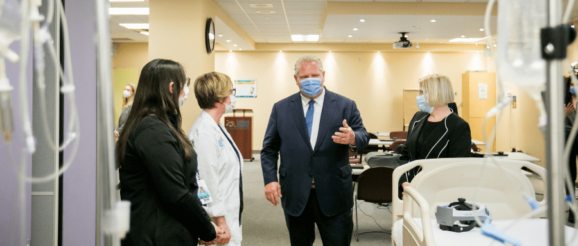Ford’s health-care plan – disruptive innovation, not privatization: Shawn Whatley in the Financial Post | Macdonald-Laurier Institute

Ontario already has Independent Health Facilities. These publicly funded, privately owned facilities provide diagnostic imaging, sleep studies, dialysis, abortions, minor surgeries and more. There were over 800 IHFs in Ontario in 2012, 50 per cent physician-owned. For example, a clinical pathologist, who owns a lab, could bill for all the tests done. Or a radiologist might read all the scans performed at a radiology suite, billing for each one. More often, a group of physicians would work together to manage all the work created in a particular lab or imaging facility. Ownership structures could vary: partnerships, associates, sub-contractors, and so on.
IHFs get paid for services provided. If output slips, income suffers. High-quality care is essential to maintaining licensure and market share. Patients can choose which IHF to use. Any hint of unfriendly service, long waits or doubts about quality drives patients away. Unlike hospitals, IHFs must remain acutely sensitive to service, quality and wait times.
In essence, the new Ontario initiative simply allows for IHFs (or something similar) in a wider range of investigations and surgeries. If it succeeds — and given its incremental nature it’s hard to see why it wouldn’t — it will have achieved a significant innovative disruption to the status quo.
The premier’s plan is “bold” because it disrupts. It gives services traditionally “owned” by the hospitals to facilities that must innovate to stay solvent. By introducing competition into the supply of these services, it is bound to be good for patients. Anyone who cares about health care should hope Ontario gets its new plan up and running soon.
Shawn Whatley is a practicing physician, a senior fellow at the Macdonald-Laurier Institute, and author of When Politics Comes Before Patients: Why and How Canadian Medicare is Failing, 2020.
